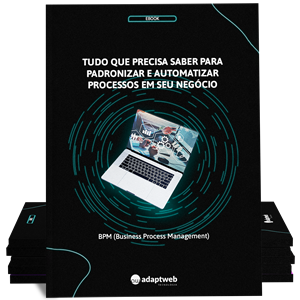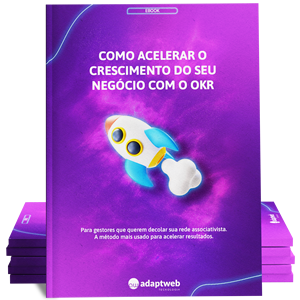Regardless of where they are, your remote employees are an integral part of your company and should feel just as able as your in-house team. One week isn’t enough to fully integrate new employees into your company culture. In fact, only 29 percent of new hires feel fully prepared and supported in their new roles after their onboarding experience. Use the following strategies to create a personalized remote employee onboarding experience that turns your new hires into long-lasting team members. We’ve developed a list of best practices for an effective remote onboarding program, complete with a checklist that you and your teams can use again and again.
All these questions the manager takes a cursory look at even on the newcomer’s first day of work. However, it is impossible to absorb such a large amount of information remote onboarding best practices at once, especially online. The main task is to get them acquainted with the company and the other employees, as well as to define the work tasks for the near future.
How to organize the first week of the newcomer’s online work?
A well-thought-out plan can make all the difference in how successful your remote onboarding process is. The plan should cover everything needed to ease the new remote hire into the company in their first weeks. In the realm of remote working, the onboarding process lays the foundation for the successful and seamless integration of new hires.
Now is the time to delve into the unique challenges and discuss effective strategies to overcome the inherent obstacles. The role of technology and practical perspective is essential for creating a successful remote onboarding program. Organizations can leverage tools such as surveys and assessments tailored to remote onboarding to gather these essential insights. These instruments serve as a means to pinpoint specific areas where improvements can be made within the remote onboarding program.
Five ways technology can help you to address hiring challenges in your SMB
The best way to overcome any differences is to develop a checklist and use it to help remote employees succeed in your company. Few custom software development companies use their own onboarding software. This blog post will explore different strategies and best practices for onboarding a successful remote employee. This includes practical advice on creating an effective onboarding process and the technology needed to ensure success. Activities like virtual lunches and buddy systems can replicate in-person onboarding events and help new hires feel more connected to their colleagues. By implementing creative approaches to build relationships, organizations can ensure that remote employees feel supported and engaged, ultimately leading to increased productivity and job satisfaction.
Encourage open and transparent communication channels, like chat platforms or discussion boards, to facilitate remote team members’ participation and information exchange. Fantastic employee onboarding minimizes new hire turnover, contributes to a positive working atmosphere, and facilitates good communication within and across departments. And remote workers can be onboarded with video if you use the right tools. You can also look to gain feedback on the onboarding process, which you can use to improve it for future new starters.
How to Onboard Remote Employees Successfully (aka…What is Needed to Work Remotely)
Sending out a short feedback form after the big onboarding tasks are done helps to gauge how the new employees are getting on and can help to identify reasons for a poor onboarding experience. From a digital employee handbook to software and process-specific documentation, make sure you make remote onboarding easy for new hires. Onboarding remote employees often starts before new hires officially join the company. However, in some organizations, onboarding is often confused with orientation. While orientation might be necessary—paperwork and other routine tasks must be completed—onboarding is a comprehensive process involving management and other employees that can last up to 12 months.
You can also make it an opportunity to obtain feedback from them on how they are adapting to their new work role, learn about any training requirements, and discuss future plans. Ensure your new team member has the remote tools they need to work effectively at home – things like a computer, second monitor, charging cable, HDMI cable, mouse and keyboard, etc. Have these items sent to their home prior to their first day so they can kick off day one on the right foot. Remote employees look forward to concrete goals and an opportunity for one-on-one face time with their manager. Employees with proper support during onboarding are 54% more productive as new hires.
What are the challenges of onboarding remote employees?
The action fosters a sense of professionalism and creates an environment that encourages optimal performance and collaboration. Time to proficiency, employee engagement, and customer satisfaction are key performance indicators used to measure onboarding success. Remote onboarding can include setting up virtual orientations with IT, assigning a ‘welcome buddy’, and having new hires from different departments meet together virtually. Self-service tools enable employees to quickly learn company policies and procedures.
- Remote work has become increasingly popular since the pandemic revealed the ease and efficiency of employees working from home (and worldwide).
- Online course creation expert Steve Dotto’s shraes his 5-step process for creating mini-courses to build your list and grow your business.
- It is a crucial advantage, allowing them to accommodate their needs and preferences.
- Most HR professionals agree that a complete onboarding process should take place over a minimum of three months.
- When you onboard remote employees, they need a clear understanding of what their role entails and what is expected of them.
- You should use the onboarding process to drive home what you expect from your new worker in their position.
Automated onboarding processes use digital tools to trigger and set up key events. This allows new hires to efficiently complete tasks and participate in activities online, while minimizing the need for your manual intervention. So here we look at best practices, onboarding tools, and ways to streamline the process. The key to a successful company onboarding is to never forget the human aspect.









